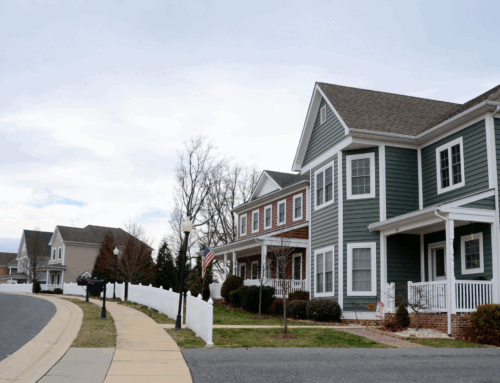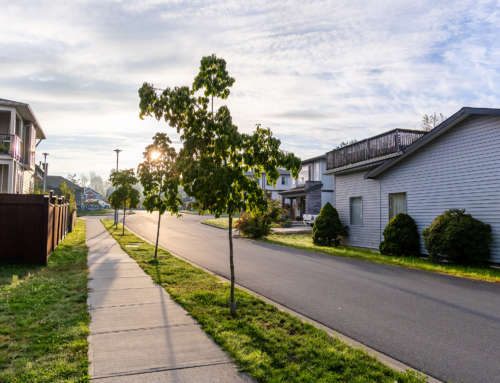Selling a home involves more than pricing and staging. Timing plays a crucial role. In Greater Philadelphia the best time to list affects how fast your home sells and how much you get. This article examines seasonal trends, local data, and what you should watch when choosing when to sell your home.
Understanding the Seasonal Market Cycles
Spring Gains Momentum
Spring often brings the strongest buyer demand. Warmer weather makes neighborhoods look better. Yard and landscaping shine. Buyers emerge after winter. Families want to move before the school year ends. These factors drive strong showings and higher offers. Data from Zillow’s 2024 analysis of the Philadelphia metro area shows that homes listed in early June sold for about 2.2 percent more than homes listed at other times of the year, as reported by the Inquirer at inquirer.com. Spring listings also tend to sell faster. Buyers compete more heavily. That means homes priced well and properly prepared often see multiple offers. If you are flexible on timing and want best price, spring is often the ideal window.
Early Summer: Peak Price Period
Late spring flows into early summer. In Greater Philadelphia many sellers see the highest returns during the first half of June. That window captures both buyers motivated by school calendars and those who waited for homes listed in spring. The data shows not only higher median sale price but also favorable perception by buyers according to the Inquirer at inquirer.com. The key is preparation. Homes listed in that period often benefit from strong curb appeal, energetic market buzz, and competing offers. If you list in early summer make sure your home is market ready by late May with repairs, staging, landscaping, and photography.
Fall: Hidden Opportunities
Fall generally offers a secondary opportunity to sell well. After the heavy activity of spring and early summer some sellers pull back. Inventory tends to taper off. Fewer options for buyers make homes that are in good shape more appealing. Motivated buyers who missed earlier windows return to the market seeking to close before winter. Pleasant weather and changing colors add aesthetic appeal to listings. Montco Living explains this seasonal opportunity in their article on montcoliving.com. If you list in September or October you may face less competition. Homes that show well often attract serious buyers. But the fall window is narrower than spring. Preparation for staging, lighting, and maintenance is especially important.
Winter and Late Fall: Risks and Benefits
Late fall through winter tends to be slower. Fewer buyers. Shorter days. Weather issues reduce curb appeal and showings. Homes often sit longer on market. Pricing pressures increase. Yet there are benefits. Sellers during winter may face less competition. Serious buyers relocating for work or needing quick moves may make strong offers. If your home shows well and is priced properly there is space to negotiate. Montco Living notes that even in winter a well prepared listing can succeed, as shared on montcoliving.com.
Local Data You Should Know
Philadelphia’s housing market has specific patterns. Knowing these helps you choose timing that fits your goals. Homes listed in the first half of June in the Philadelphia metro area sold for about 2.2 percent more than those listed at other times. That translated to roughly $8,100 more for the median priced home according to the Inquirer at inquirer.com. The median sale price for homes reaches a high in June. Homes listed then often exceed annual averages based on data from listwithclever.com. It takes an average of 79 days to sell a house in Philadelphia from listing to closing. Homes remain on market about 44 days then in contract roughly 35 days until final closing, as explained by listwithclever.com. These data points show that if your primary goal is price, early June often yields the best results. If your goal is speed or less competition, early fall may offer a strong alternative.
How Interest Rates, Buyer Demand, and Inventory Shift Timing
You cannot treat seasonality in isolation. Several external factors shift optimal windows. Interest rates influence buyer ability and demand. When mortgage rates go up homes get more expensive and buyer pool shrinks. Sellers listing into periods of high rates may need to adjust expectations. Local economic stability, job growth, and consumer confidence matter too. Inventory matters. If many sellers list at once, such as in spring, competition reduces your leverage. If inventory is low, often in fall or winter, even a late listing may catch strong interest. Buyer preference for school calendars matters in Greater Philadelphia. Families often want to move before the new school year begins. That pushes demand earlier in the summer. Aligning your listing with that cycle tends to yield stronger offers and shorter time on market.
Choosing the Best Time to Sell for Your Goals
Decide first what your priority is: highest price or fastest sale. If you want top dollar, plan to list in late spring or early June and prepare your home well in advance. If your priority is minimizing days on market and lower competition, early fall in September or October can serve you well. If your timeline is tight or constrained by job relocation or family reasons then prepare to list when you are ready regardless of season. A well presented home sells in any season, though you may pay a premium in price or wait time depending on timing.
Internal Considerations: Location, Home Condition, Pricing
Location within Greater Philadelphia influences seasonal effects. Suburban areas like Bucks County or Montgomery County often behave differently than central city neighborhoods. Buyers in suburbs often have school priorities, require commutes, and desire yard space. These features are more visible and appealing during spring or early summer. Your home’s condition matters. Landscaping, curb appeal, staging, and photography are critical especially in strongly seasonal periods. Lighting, interior warmth, and upkeep matter more in fall or winter when natural daylight diminishes. Pricing must reflect not only home quality but prevailing market conditions. Overpricing in slow periods hurts more. Underpricing in peak seasons may leave money on the table.
Examples and Case Insights
Suppose you own a well kept single family home in Montgomery County. You want highest return. If you begin preparing by February or March with landscaping, decluttering, and small repairs, then list in early June you likely get more showings and better offers. Competition will be high but if your home shows well, buyers compete. Alternatively, if you own a home in Philadelphia proper with older architecture or less yard space, preparing for a September listing might suit you. Buyers who missed earlier sales and want to move before the holidays are still active. With fewer competing listings you may get better visibility. One more example is interest rates. If mortgage rates are rising when spring arrives many buyers hold off. That may push some sales into fall or winter. If you see rate signs or economic apprehension, listing earlier could avoid the slowdown, or waiting until rates ease might improve results.
How to Prepare for Optimal Timing
Preparation is essential regardless of window. Begin by assessing your home’s condition months ahead. Use a comparative market analysis with local data. Engage professionals for inspection, repair, and staging. Make sure your listing photos and presentation are strong. For all seasons but especially spring and summer, curb appeal rules. For fall and winter emphasize warmth inside, lighting, and seasonal touches that feel welcoming. Stay in close contact with your agent. Track mortgage rate trends, local inventory levels, and buyer behavior. Be ready to adjust your plan. Sometimes listing earlier or delaying a few weeks yields measurable financial benefit.
Internal Resources from Albright Real Estate
If you want to explore homes in your area, see our listings for Bucks County at albrightrealestate.com. If you prefer viewing options in Philadelphia city, check our page for city homes at albrightrealestate.com.
External Resources and Studies
Zillow’s analysis of 2024 home sales in Philadelphia shows strong price gains for homes listed early June. The full report is available through the Inquirer at inquirer.com. Montco Living’s study of seasons in Greater Philadelphia confirms spring and early summer remain strongest overall though fall holds viable opportunity for motivated sellers at montcoliving.com.
Conclusion
Choosing the right time to sell in Greater Philadelphia makes a measurable difference. Spring and early summer offer the highest prices and most buyer activity. Fall provides a second chance for those prepared. Winter may be slower but serious buyers remain. Your preparation, location, pricing, and readiness determine success more than the calendar alone. If you are thinking of selling, let us help you set the optimal timeline. Contact Albright Real Estate today to get a personalized market analysis and a strategy built for your home, your schedule, and your goals at albrightrealestate.com.








